This composition presents a precise and aesthetically pleasing panorama of the town of Wellington, New Zealand, as it was in 1841, viewed from Clay Point hill, looking southeastward. The lithograph is an intricate blend of geographical depiction and a study of early settler and Maori life, with a focus on the town's burgeoning waterfront, which is said to be shown in one-third of its extent in this scene.
At first glance, the viewer is drawn into the vista of a curvilinear bay, adorned with sandy beaches and crowned by undulating hills in the background. The water body is speckled with a handful of ships, two- and three-masted alike, punctuating the calm of the bay and implying a burgeoning commercial presence.
In the foreground, we observe figures in varied occupations; men tending to a flock of goats, a pair of riders on horseback, and a group of Maori individuals with a traditional canoe, thus evincing a harmonious coexistence of diverse cultures. The shoreline, now lower Willis Street, is further characterized by Bethune & Hunter's Stores, a notable commercial establishment of the period.
The mid-ground offers a view of upper Willis Street, delineating its trajectory up a gentle slope on the right. It features scattered buildings and docks, among which stands a conspicuous Grecian-styled structure identified as the Exchange Building, its architectural grandeur indicative of the town's steady economic progress.
The background extends onto Te Aro Flat, detailed with additional jetties and an assortment of public and private buildings, interspersed with natural features such as the modern Mercer and Wakefield Streets. The skyline is dominated by the silhouettes of Mounts Cook, Albert, and Victoria, labeled correspondingly, serving as a geographical guide and adding a sense of depth and scale to the composition.
This lithograph, the product of a collaboration between C. Heaphy and T. Allom, documents Wellington in its infancy as a colonial settlement, presenting an invaluable historical tableau, and offering insights into the town's early socioeconomic dynamics and cultural exchanges. The artistry, accuracy, and historical significance of this item render it an exceptional addition to any collection of New Zealand history or colonial art.
States
Seemingly Ellis's first state of four, without the additional "Published and sold by Trelawny Saunders, Colonial Library, 6, Charing Cross." present in all future states.
Ellis calls for this to be a lithograph in tints finished by hand.









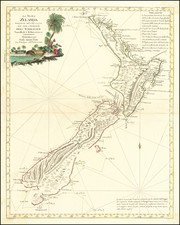
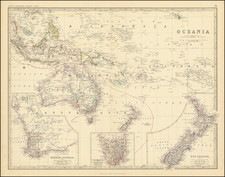
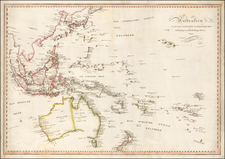
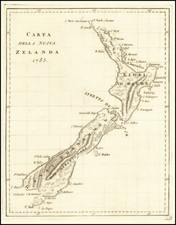
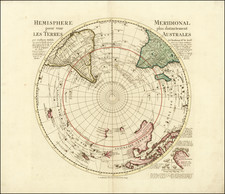
![Neu-Seeland [with] West Australien [with] Tasmania](https://storage.googleapis.com/raremaps/img/small/98073.jpg)